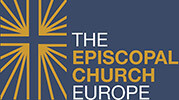|
The Episcopal Church entered into full communion with the Old Catholic Churches of the Union of Utrecht on the basis of the Bonn Agreement in 1934. The Old Catholic Church consists of several national churches in Europe -- located in the Netherlands, Germany, Switzerland, Austria, the Czech Republic, and Poland. The Old Catholic Churches in Europe came into being as a result of the Pope's claim to authority beyond his own diocese of Rome - a claim which their existence effecitvely denies. Each Old Catholic Church is autonomous, and the local Church in each country is the continuation of the Catholic Church as it was before the Bishop of Rome asserted his supreme authority, by divine right, over the life of the Catholic Church. -- that could not accept the definition of papal infallibility presented by the first Vatican Council in 1870. Recent Articles & Videos One Church in Europe, Old Catholics, Episcopalians commit to deeper communion (Oct 2013) Les Eglises anglicanes et vielles catholiques: la même famille Ecumenical bonds reinforced with presiding bishop's visit to Europe Background In The Netherlands, in 1702 the Pope deposed Archbishop Petrus Codde and installed an Apostolic Vicar. As a consequence, in 1723 the Metropolitan Chapter of Utrecht decided to elect a new Archbishop. After his election, Cornelius Steenoven was consecrated by Bishop Dominique Maria Varlet. The Archbishop and the Metropolitan Chapter were excommunicated by the Pope, so it was necessary to reorganize the life of the Church without links to Rome. The ancient sees of Haarlem and Deventer were re-established (in 1742 and 1758 respectively) and for 150 years the Church of Utrecht had to persevere in isolation. In Austria, Germany, and Switzerland, the organization of the Old Catholic Dioceses came about in response to the dogmas of papal infallibility and supreme jurisdiction, pronounced at the First Vatican Council in 1870. Catholics who could not in their conscience accept these dogmas raised a protest against their lack of historicity, the implicit fault in ecclesiology and the inevitably schismatic results. In consequence of this protest – and their resulting excommunication by bishops still subject to Rome – they formed parishes so that they could continue to live as Catholic Christians. Synods were called and a bishop was elected and consecrated from among the priests who had joined the movement. Each local Church then established its own canon law. Through these steps, the regular church life of "the same Catholics as before the Council" was ensured. According to Ignaz von Doellinger, the most prominent scholar and protagonist of the Old Catholic movement, the Old Catholics had to fulfil a triple mission: (a) to give witness to the truth of the Church and against the heresies of papal supreme jurisdiction and infallibility; (b) to represent the Church cleansed from error and superstition, and more in conformity with the ancient Church; and (c) to be the instrument and mediator of a future great reunion of the separated Christians and Churches. In 1874–75, two Union Conferences were held in Bonn, with the participation of Orthodox, Anglican and Protestant theologians, resulting in surprising agreements on theological principles. Unfortunately, nothing more concrete came about. The Old Catholic Bishops joined in 1889 to form the "Union of Utrecht". They established a Bishops' Conference which meets once a year, and laid down the principles guiding communion among their Churches. At present, the Old Catholic Bishops of The Netherlands, Austria, Germany, Switzerland, the Czech Republic, the United States of America and Canada (the Polish National Catholic Church), and Poland (the Polish Catholic Church, founded by the PNCC but now independent) are members of the International Bishops' Conference. The Archbishop of Utrecht is the ex officio chairman of the Conference but does not have any jurisdiction beyond his own diocese. There are two other instruments of communion besides the International Bishops' Conference: the Old Catholic Congress, which meets every four years, and the annual International Theological Conference. On 2 July 1931 the Bonn Agreement was signed, establishing intercommunion (now known as""full communion") between the Old Catholic Churches of the Union of Utrecht and the Church of England. This full communion has since been extended to all the member Churches of the Anglican Communion, by action of the synods. This agreement reads, "(1) Each Communion recognizes the catholicity and independence of the other and maintains its own. (2) Each Communion agrees to admit members of the other Communion to participate in the Sacraments. (3) Intercommunion [in 1958 changed to Full Communion] does not require from either communion the acceptance of all doctrinal opinion, sacramental devotion, or liturgical practice characteristic of the other, but implies that each believes the other to hold all the essentials of the Christian Faith." To monitor the progressive growing together of the two Communions, the Anglican/Old Catholic International Co-ordinating Council was established by the International Bishops' Conference and the Lambeth Conference. Its first official meeting took place in 1999. The most recent meeting was held in Kilkenny, Ireland, 27-30 August 2014. Thaddeus A. Schnitker, Old Catholic Co-Secretary July 1999 Contact information: E-mail:
|
